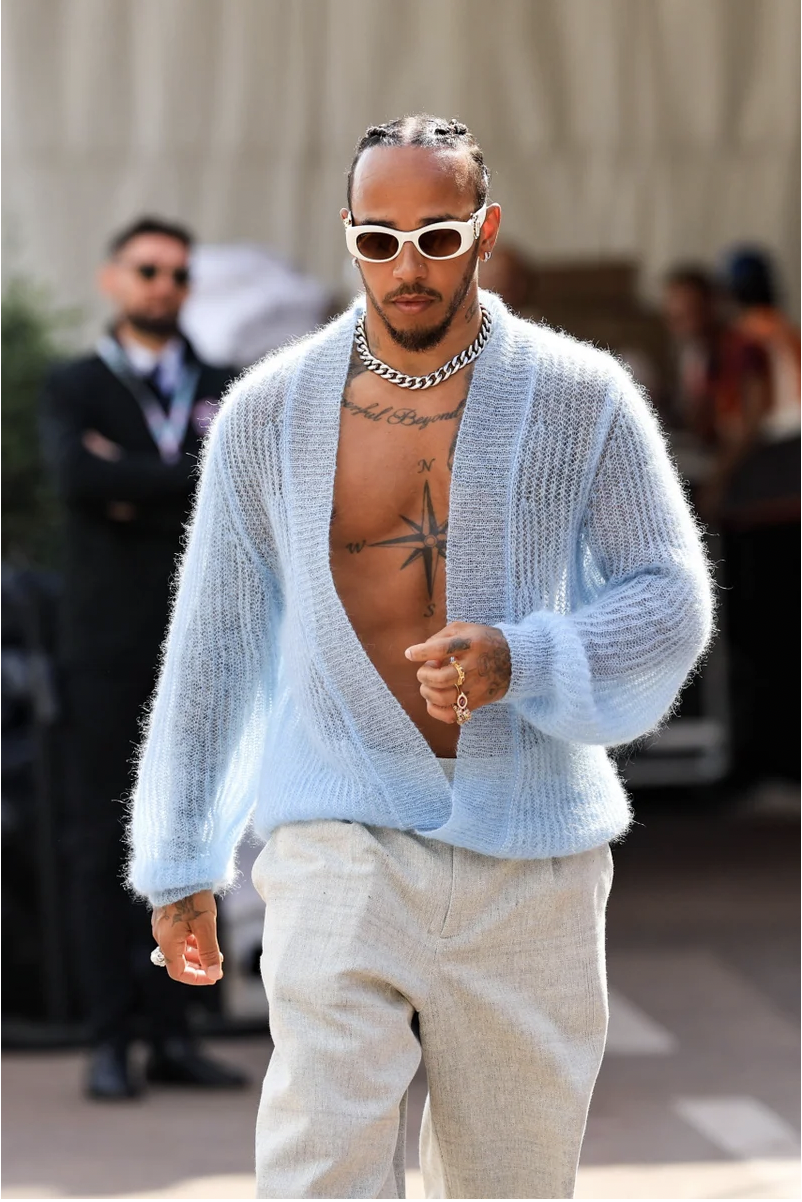F1 Fashion: The Race To Elegance and Edge; How Major Fashion Houses Embrace Racing Culture
While Charles Leclerc’s emotional victory in his home country captivated us all this past weekend, the fashion that graced the streets of Monaco might have been even more thrilling. From the subtle whispers of understated luxury to the bold and dynamic patterns rivaling the roar of the engines, Monaco showcased a stunning array of style. In this piece we will explore the prominent fashion houses that have embraced F1 and racing culture, delve into the history of this unique fashion intersection, and examine its significant impact on the industry.
History of Formula One
In the early 20th century, motorsport was still in its infancy. Engineers and builders were pushing the boundaries of speed and technology by hosting races and competitions across the globe. The genesis of organized racing can be traced back to 1906 with the Targa Florio, conceived by engineer and racing driver Vincenzo Florio. This pioneering race navigated a challenging 92 mile circuit through the rugged terrain of the Madonie Mountains, marking the dawn of competitive motorsports. Moving to 1911, the more commonly known race of the Indianapolis 500 was raced for the first time ever. Both of these preceded Formula 1 and set the tracks and standards for motorsports. Following the aftermath of World War 2, Europe's passion for motor racing was rekindled, and the idea of Formula One was born.
Sanctioned by the Federation Internationale de L’Automobile, the inception of the Formula One World Championship began in 1950. The inaugural season featured seven races across Europe, with Alfa Romeo securing the first championship title. This marked the birth of a sport that would ignite a worldwide passion. As Formula One evolved, its popularity soared, captivating audiences and driving the advancement of automotive technology. Quickly out of the gate, Ferrari, Mercedes, and Lotus pushed the boundaries of aerodynamics and emerged as household names and leaders of the industry. With a legendary race of Ford vs. Ferrari, the fan base expanded outside of Europe and began seeping into other parts of the world. With this, racing legends emerged, personalities were shown, and popularity grew. In the late 1970s, fan bases roared with the introduction of turbocharged engines, taking the power of these cars to the next level. Rivalries grew fan bases and spectators, as Ferrari surged as a consistently dominant force.
Intersection of Sports and Fashion:
Historically, clothes made for athletes or different sporting events solely focused on functionality, with little emphasis on aesthetics. Societal views shifted and sportswear became a powerful expression of identity, history and culture. Sports personalities evolved beyond their roles as athletes, becoming fashion icons and trendsetters. With the evolving trends of the '90s and Y2K, sportswear and street style emerged as dominant fashion movements. The rise of athleisure further demonstrated that sports and fashion could coexist harmoniously and intersect at various points in history. Sneaker culture exemplifies this synergy perfectly. Sneakers are not only essential for functionality and performance in sports but have also become powerful status symbols and fashion statements.
The fashion industry soon recognized the power of fan bases of athletes, and since have sought out collaborations, brand deals, and partnerships with athletes and sporting events. Another significant outcome of this trend is the comparison between the demographics of athletes and social media users. The rise of social media has undeniably amplified the reach and impact of fashion, but it has also revolutionized the way athletes connect with their fans. For the first time, fans can interact directly with their favorite players and gain insights into their lives off the field. The age demographics of sports fans closely mirror those of top social media users, creating a powerful synergy that enhances both their influence and reach.
Focusing more on F1 influence specifically, one of the major gaps in participation in all sports, but more so in F1 was women. As times have changed, women are now being represented in male dominated fields, with sports as no exception. Formula One is now the second fastest growing sport in terms of attraction and media growth. This is all because of the participation of women, which also brings an entirely new perspective of fashion. As we can see, the media attention of both sports and fashion go hand in hand. Athletes are in the spotlight constantly, so they might as well look good while doing it. Many of them have hired stylists, making it about more than sports. Game day looks have skyrocketed in popularity, and is now a huge spectacle. Major fashion houses also began dressing athletes, and have been able to reach an entire new demographic and following.
The “F” In F1 Stands For Fashion
With all of this being said, Formula 1 has become a pool for celebrities, socialites, and some of the biggest names in fashion. This past weekend in Monaco, stars dazzled in the stands, almost catching eyes more than the actual race cars. Here are some of the best looks that caught our eyes.
Heidi Klum and daughter Leni in matching white jumpsuits. Emulating members of a pit crew, but way more chic. This effortless look matched the vibes of the race perfectly.
Similarly, Trent Alexander Arnold sported an all Prada look, in coveralls. The large buckles added an industrial finish that paid homage to the origins of racing and automobile engineering.
Peggy Gou sported Chrome Hearts, with a red and patterned corset, perfect blending in with the vibrant reds across the track, and added a leather mini skirt honing in on the edginess of racing.
Emily Ratajkwoski his the racing motifs right on the head wearing an oversized racing jacket with a checkered bra underneath.
With one of the best looks of the weekend, Lewis Hamilton rocks it in Dior from head to toe. In a breezy look showing off his physique, he is dressed perfectly for the hot Monaco sun.




